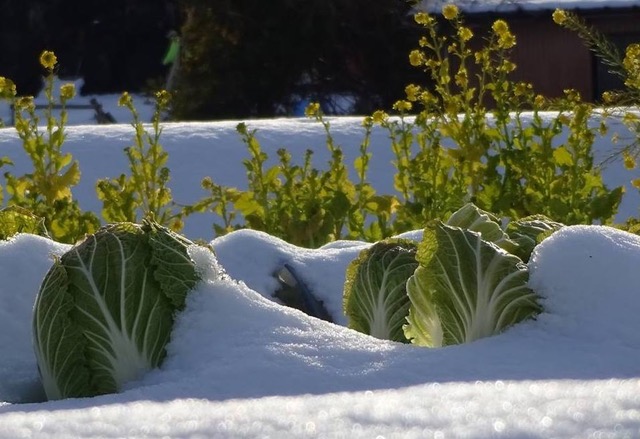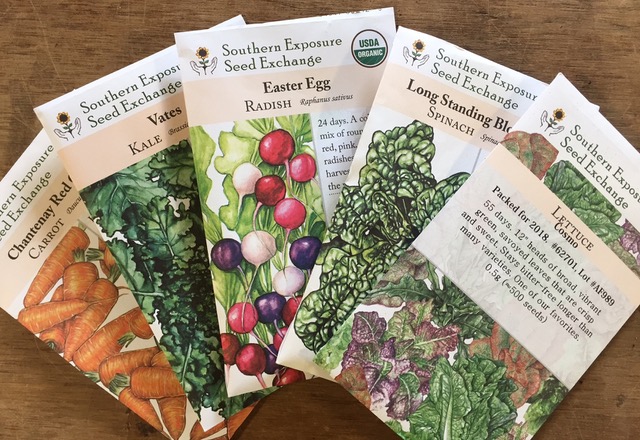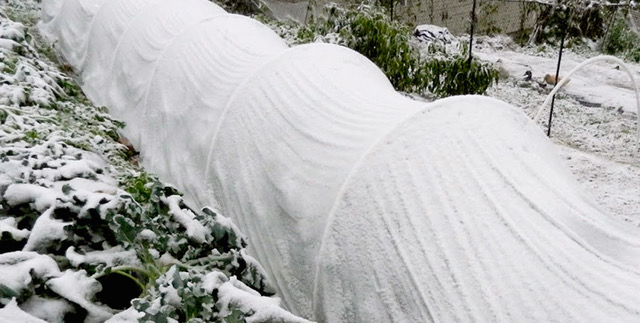-Chris Amaya-

Missed your opportunity for a bountiful summer harvest? Well don’t beet yourself up, because that’s exactly what we plan to do for you, with this Fall Planting Guide. Generally, I save most of my root crops (such as beets) as well as the entire short-season brassica family of vegetables for fall planting, as cooler days and nights pave the way for dense cabbage heads and perfect broccoli formation. Not to mention the fact that avoiding the summer heat and major pests like flea beetles, are some mighty good reasons to give cool weather gardening a shot.
Here in the heart of North Carolina, zone 7b has more than enough potential for crops to flourish even through the dead of winter. Just one example – one of my favorite and most used crop in my kitchen all year long – hardneck garlic! Treat garlic cloves just like flower bulbs, and plant the cloves pointy side up, 2 inches deep and 5 inches apart, starting mid-October. Don’t forget to keep the beds watered, weeded, and mulched until the temperatures drop too low for irrigation purposes. Then simply wait. In early spring, rake away the mulch and fertilize with high nitrogen (also add garden sulfur for extra stinky garlic), giving the cloves a huge boost in size. When most top foliage begins to yellow, reduce watering so that bulbs will dry prior to harvest. For curing, keep your garlic in a well-aerated spot away from sunlight for 3 weeks. After bulbs are cured and the outside feels dry like brittle paper, use pruning shears to cut off all the roots and the tops, just leaving and inch for a handle when roasting.
When planning out your fall garden, you should definitely think about crop placement and rotation. Ideally, brassicas should only be planted in the same spot once every three years. Rotating your crops will help avoid a buildup of pests or diseases particular to one plant family, and will also help balance the nutrients being used up from the soil. Prior to planting, always be sure to add compost and minerals to your planting beds for plant vigor and flavor profile.

Direct-sowing seeds in raised beds is going to be the easiest planting option for many varieties of veggies, mainly because your soil won’t be compacted down in raised beds, and they allow carrots, beets, turnips, parsnips, etc. to mature to full size without competition of many weeds. Rainbow chard is another great fall vegetable to plant, with its vibrant colors making it the star of any salad. Of course we can’t forget kale with its superfood attributes and hardiness for cold temperatures, making it one of the easiest things to grow in the fall.
Germinating seeds under a cold frame or mini-greenhouse in late July and all through August is ideal 2-3 weeks before tansplanting seedlings outside into their garden beds. If you’re using an organic pesticide, now is the time to do it. Here at the store we recommend systemics like Aza Max or SNS 209 a few weeks prior to planting outside for optimal results. Brassicas like cooler temps, so a good trick is to wait to transplant them into your garden until right before a rain! If there is no rain in the forecast, try laying cardboard down a few days before planting to shade and cool down the soil.

Once your direct-sown seeds are growing and your transplants are set out, you want to make sure your garden will thrive throughout the mercurial fall months when temperatures can fluctuate greatly. Many times, unexpected micro climates found in small dips or valleys within a single backyard can result in frost when cooler air settles down into these low spots. Agribon is our go-to for crop protection from both frost and insects. When dry, this breathable material makes application easy by allowing you to drape directly on the plants for quick protection. You can also fashion hoops from PVC and drape with Agribon to create grow tunnels that protect crops without touching the plants. Try to keep the frost fabric as clean as possible so that the light transmission remains high. Move fabric out of the way when watering to help keep it dry, and try to avoid holes or tears that allow heat to escape.
Fall vegetable gardening has a lot to recommend it – fewer pests, generally more pleasant weather to garden in, and, of course, the ability to harvest and enjoy fresh, tasty produce through the cool months. As with all gardening, there are some challenges to gardening successfully during the fall and winter, but we hope you’ll feel inspired to get your fall garden on – and we are always here to help you with any questions you may have or challenges you may face!

Power Equipment Warehouse says
Fall / end of summer is also a great time to hit the clearance racks at local stores! Get plants for next year dirt cheap. Plant your potted plants (zone appropriate) too!